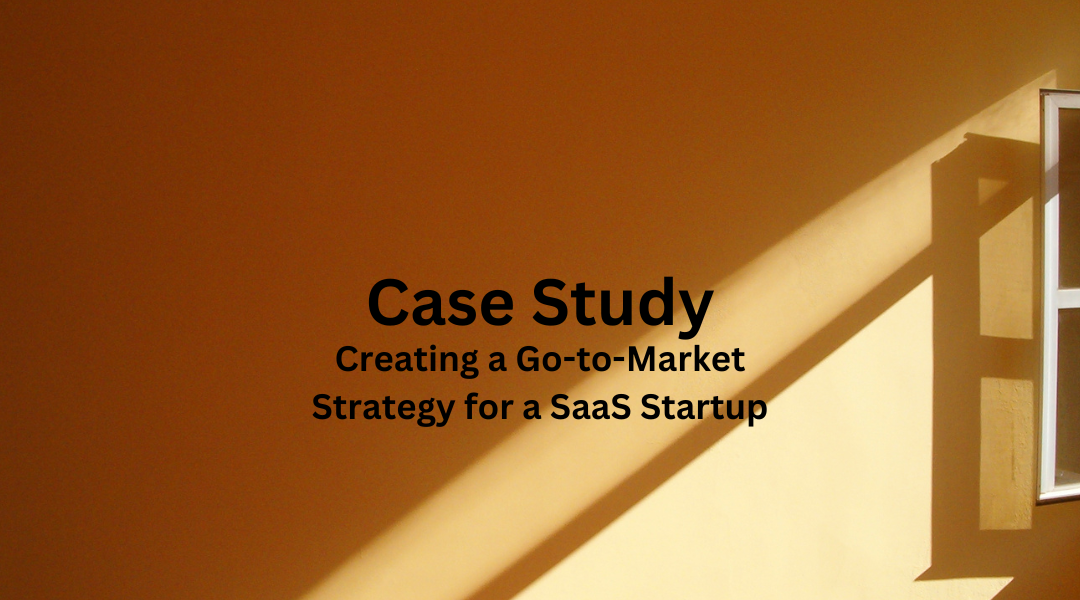A SaaS startup in the data and market research sector required a comprehensive go-to-market strategy to successfully launch its innovative platform. This product was designed to consolidate fragmented data sources and provide businesses with advanced, real-time insights. However, like many startups, the company faced challenges in positioning itself in a competitive market and reaching its ideal customer base. A tailored go-to-market strategy was developed to ensure sustainable growth, focusing on market analysis, customer segmentation, and clear sales tactics.
Challenges and Objectives
The client was struggling with:
- Fragmented Data Sources: Their target market had scattered, inconsistent data across various channels, making it difficult for businesses to glean actionable insights.
- Lack of User-Friendly Tools: Many potential users were hindered by data cleansing and aggregation issues, which increased operational costs.
- Customer Pain Points: In the two identified sectors, businesses were overwhelmed with managing data and required more efficient, localized insights.
The main goal was to develop a go-to-market strategy that would clearly define the company’s ideal market segments, sales approach, and growth opportunities while positioning the product as a leader in data intelligence.
Solution: A Structured Go-to-Market Strategy
The strategy was split into several key sections:
- Market Analysis
The strategy identified two key markets:
- Market One: High technology expenses, growing demand for data services, and a fragmented data landscape made it an ideal sector.
- Market Twos: Facing challenges with localized data and consumer feedback, hospitality brands needed efficient data solutions for improving customer experience and expansion planning.
- Customer Segmentation
The strategy segmented customers into three main groups:
- Customer One: Mid-sized firms (5-50 employees) needing research on demand.
- Customer Two: Businesses with 10+ locations, requiring deep insights
- Customer Three: Multi-unit stores needing hyper-localized data for store-level analysis and performance tracking.
- Sales and Marketing Strategy
The team developed a sales strategy that combined inbound marketing (such as content marketing, case studies, and webinars) and direct outbound efforts (e.g., cold outreach and product demos). The approach was flexible, allowing the company to scale efforts based on growth and market response. - Growth Opportunities
Several opportunities for future growth were defined, including:
- API and CRM integrations: Allowing the SaaS product to plug into existing customer systems.
- White-label partnerships: Partnering with consulting firms or resellers to offer branded versions of the software.
- Service models: Offering tiers of service, from “Self-Service” to “Do it For Me,” accommodating different customer needs and budgets.
Results and Impact
The result was a successful, structured go-to-market plan that clearly defined the company’s market positioning, customer segmentation, and strategic actions for growth. Key metrics were established to measure performance, including:
- Revenue Targets: A serviceable obtainable market was determined as securing $5M to $20M in annual revenue within two years by targeting their specific markets.
- Sales Growth: A scalable sales model based on inbound marketing tactics paired with targeted outreach efforts to build relationships with consulting and hospitality firms.
The startup was able to launch its SaaS product with confidence, benefiting from a clear roadmap that aligned its sales efforts with its unique value proposition. As a result, the company continues to grow, armed with data-driven insights and a robust strategy for long-term success.
Final Thoughts
It’s important to have a comprehensive go-to-market strategy, particularly for startups launching in competitive markets. By defining clear customer segments, using targeted outreach, and creating growth opportunities, the company set itself up for sustainable growth and client satisfaction.
Read other case studies



